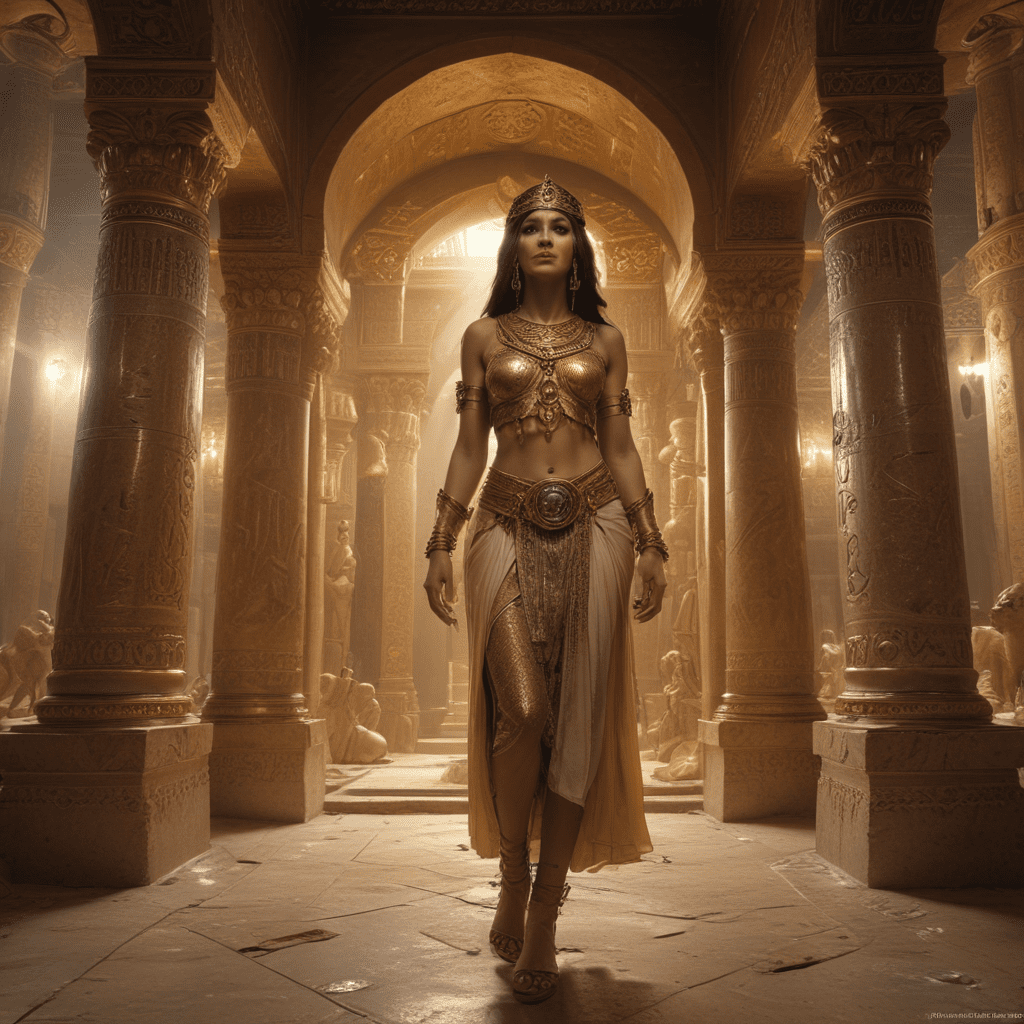The Cult of Ishtar: Sacred Practices in Mesopotamian Religion
Introduction:
The Mesopotamian Goddess Ishtar
Ishtar,
Temple Complexes and Cult Centers
Major Temple Complexes Dedicated to Ishtar
Ishtar's cult was widespread throughout Mesopotamia, with major temple complexes dedicated to her in several cities. Some of the most notable include:
- Eanna in Uruk: This was the primary temple of Ishtar, renowned for its grandeur and lavish decorations. It featured a towering ziggurat known as the "House of Heaven" and was the setting of many important rituals and festivals.
- Esharra in Nippur: Another significant temple complex dedicated to Ishtar, Esharra was considered a center of religious authority and pilgrimage. It was associated with the myth of Ishtar's descent into the underworld and held a prominent position in Mesopotamian religious beliefs.
- Bit-resh in Sippar: This temple complex was dedicated to both Ishtar and Shamash, the sun god. It played a crucial role in the annual Akitu festival, celebrating the renewal of life and the agricultural cycle.
- Tell Asmar: This ancient site housed a temple dedicated to Ishtar, dating back to the Early Dynastic Period. Excavations have revealed elaborate offerings and votive statues, offering insights into the early practices of Ishtar's cult.
Architectural Features and Symbolic Elements
The temple complexes dedicated to Ishtar were often adorned with intricate carvings and sculptures depicting the goddess in various forms. Lions, a symbol of her power and ferocity, were frequently featured as guardians of the temple gates. The use of lapis lazuli, a vibrant blue stone associated with Ishtar, further emphasized her divine nature. The temples also served as centers of economic and social activity, with markets and workshops flourishing within their vicinity.
Role of Priests and Priestesses
Priests and priestesses played a vital role in maintaining the cult of Ishtar and performing rituals. They were responsible for overseeing daily offerings, conducting ceremonies, and interpreting oracles. High priestesses held positions of considerable authority and influence, often acting as advisors to rulers and playing a prominent role in religious and political matters.
Festivals and Celebrations
Various Festivals and Celebrations in Ishtar's Honor
Ishtar's numerous roles and attributes were celebrated through various festivals and celebrations held throughout the year. These festivals served as opportunities for communities to come together, honor the goddess, and seek her blessings. Some of the most significant festivals include:
- Akitu Festival: This annual festival, held in the spring, marked the renewal of life and the beginning of the agricultural year. It involved processions, rituals, and sacrifices to Ishtar, seeking her favor for abundant harvests and prosperity.
- New Year's Festival: Celebrated in the autumn, this festival coincided with the sowing season and was dedicated to Ishtar's role as a fertility goddess. Rituals focused on ensuring the fertility of the land and the well-being of the people.
- Saggutu Festival: This festival, held in the summer, was associated with Ishtar's descent into the underworld. It involved mourning rituals and lamentations, followed by rejoicings upon her return, symbolizing the cycle of death and rebirth.
- Love Festivals: These festivals, held throughout the year, celebrated Ishtar's association with love and sexuality. They often involved rituals of fertility and matchmaking, with offerings made to the goddess seeking her blessings for love and marriage.
Significance of Celebrations in Mesopotamian Society
These festivals played a crucial role in Mesopotamian society, providing opportunities for communal gatherings, religious expression, and economic exchange. They reinforced social bonds, strengthened religious beliefs, and contributed to the overall well-being of the community.
Sacred Texts and Hymns
Written Sources on Ishtar's Cult
Our understanding of Ishtar's cult relies heavily on various written sources, including:
- Myths and Epic Tales: The myths of Ishtar's descent into the underworld and her involvement in the Epic of Gilgamesh provide insights into her complex nature and her relationship with other deities.
- Hymns and Prayers: Numerous hymns and prayers dedicated to Ishtar have been discovered, praising her attributes, seeking her favor, and recounting her deeds. These texts offer valuable insights into the theological aspects of her worship.
- Ritual Texts: Cuneiform tablets detailing rituals and ceremonies performed in Ishtar's temples have been uncovered, providing detailed information about offerings, invocations, and other ritual practices.
Theological Implications of Hymns and Prayers
Hymns and prayers dedicated to Ishtar reveal her multifaceted nature and the diverse aspects of her worship. They emphasize her power and authority, her association with love and fertility, her role in warfare, and her connection to the underworld. These texts also provide insights into the hopes and aspirations of her devotees, seeking her blessings for various aspects of their lives.



